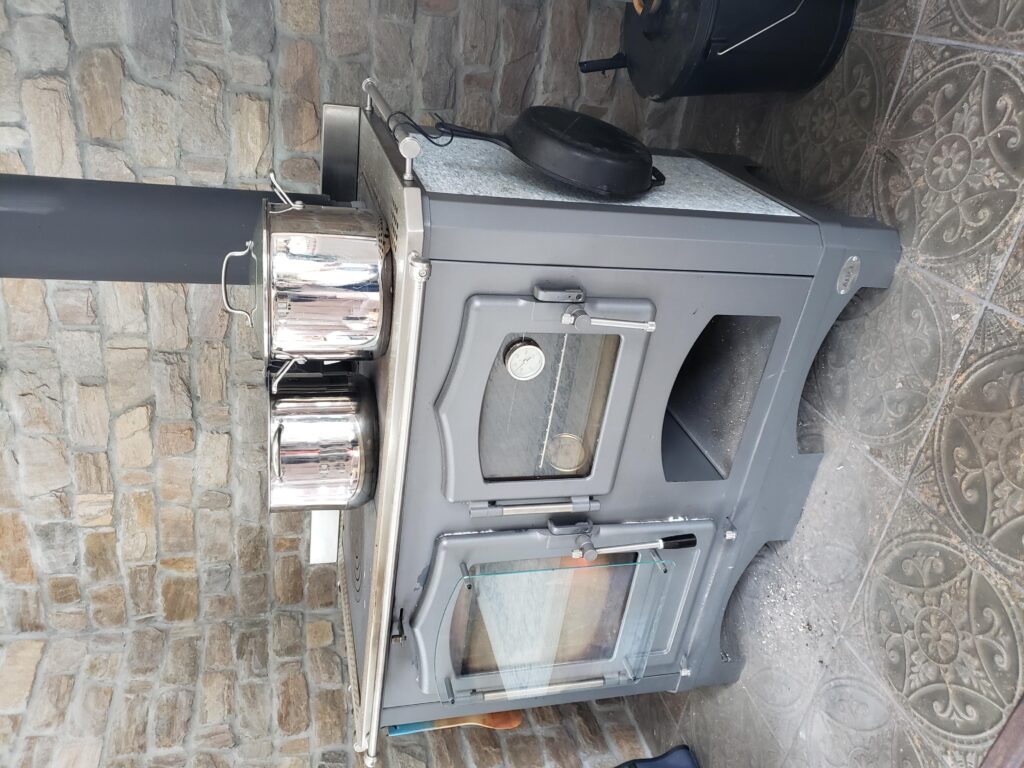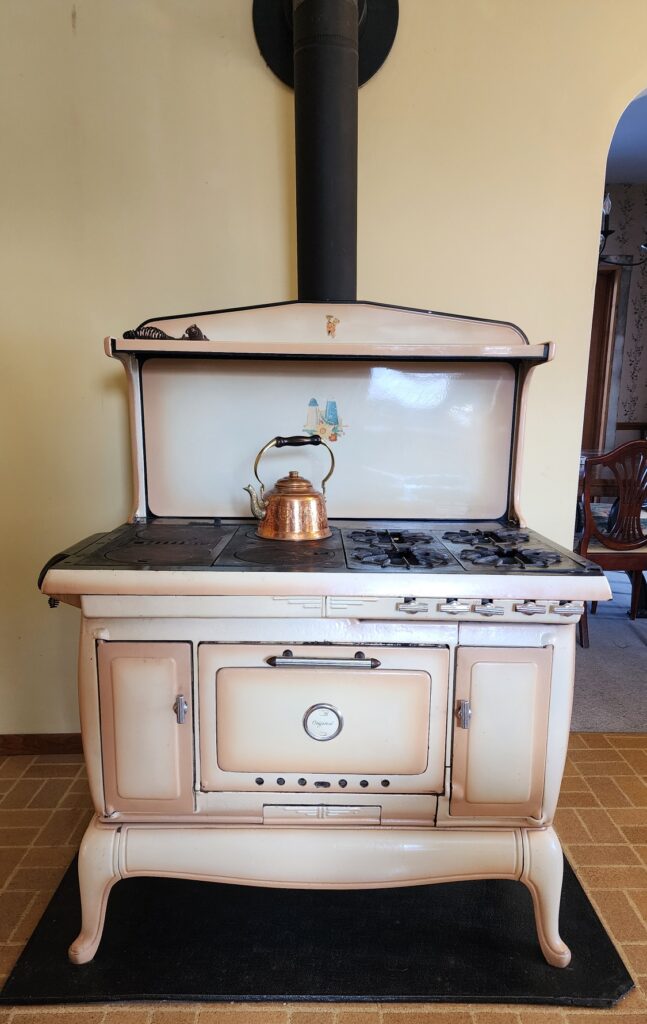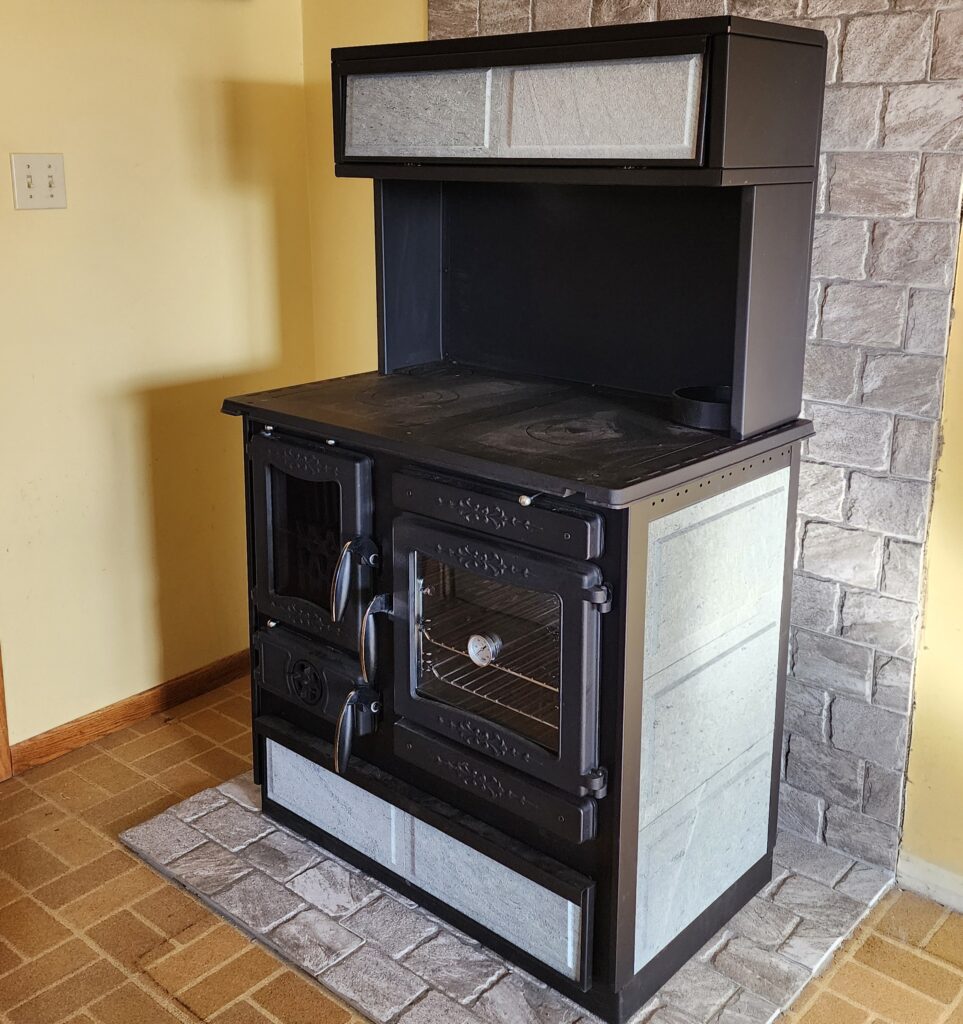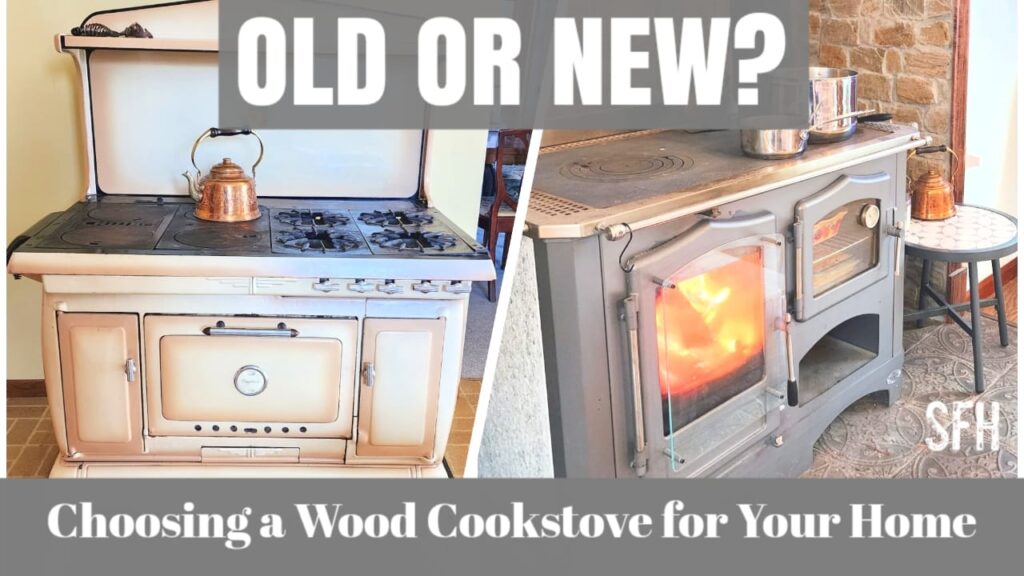Disclaimer: This post includes Amazon affiliate links. I may receive a small commission at no addition cost to you if you utilize my links. Thank you for your support!
Many people are looking to return to old-fashioned ways, including switching their wood stoves over to wood cookstoves. While these stoves were removed from most homes with the invention of gas stoves, they are becoming more popular again in place of wood stoves or gas fireplaces. These are excellent off-grid options, or can be used as a supplemental heat source and cooking option.

There are now many options for cookstoves, anywhere from antique to brand new. I’ve put together a guide to help you know where to begin in your cookstove shopping journey, as many of us didn’t grow up with one of these in our homes. It can be easy to get overwhelmed with options, so lets start at the beginning.
- Determine the primary use for your stove. If you primarily want a cookstove for heating your home, choosing one with a large firebox is important. This will likely eliminate a lot of the antique options, as most had very small fireboxes suited for small kindling or even coal. If you primarily want to use your cookstove for cooking, a small firebox will do just fine. In fact, if you are putting a cookstove in a smaller space, like a kitchen, a small firebox will probably be preferred.
- Research home owners insurance requirements. Some insurance companies will only cover your home if you have a UL certified stove. This will mean you will need to buy new, but the good news is that a lot of stove companies are applying for this certification and expanding your options. If your insurance does not have this requirement or you are willing to change companies, antique stoves may still be an option.
- Determine your budget. New stoves will be higher in price while antiques can be found more affordably. Some of these stoves are affordable because it is hard for the average person to know the value of their stoves and some are affordable because the condition is poor. Sometimes it can be difficult to know the difference. That leads to a third possible option, buying a refurbished antique stove. You will pay more money for this option and they are not always easy to find, but you are more likely to get a quality antique stove.
- Decide on buying new or used. There are a lot of great stoves out there, but it may take some digging to find them. Many of the antique options you see on Facebook Marketplace, Craigslist, etc have damage or wear that might be concerning. Knowing what to look for can help tremendously if you don’t have a restoration dealer near you. You should look for:
- Sturdy and airtight. New stoves should have gaskets in place that will prevent any leaks. Antique stoves, however, should be checked over well for any loose parts, especially near the firebox. A tight seal is necessary to keep smoke out of your home.
- Top in good condition. The cast iron top of a cookstove can be seasoned like a cast iron pan. Any rust or stains can generally be lifted and repaired. Cracks or warping on the top portion of a stove is a pretty major problem though and should be avoided.
- No rust or cracks on the front and sides. A lot of antique stoves will have issues with the enamel. Very small areas might be possible to repair, but any large areas of rust or cracks can lead to major problems down the road.
- Firebox grates and liner. These can sometimes be replaced but will need to be custom made in most cases. If they are already present and in good condition that is ideal.
- Doors and dampers. These parts are nearly impossible to replace on antique cookstoves as so many different models were made over the years. Doors, dampers, and other moving parts are very important to have at the time of purchase and installation.

5. Determine where your stove will be located. This is usually limited by where you can safely put a chimney in your home. Whether you are using an already existing chimney or installing a new one, the clearances of your cookstove, or required distance from combustibles, will also determine where you can put your stove. Every stove has different clearance requirements and researching these measurements is important when choosing the location and footprint of your stove.
6. Decide what features are important. Many stoves have options such as warming ovens, water reservoirs, safety glass, stone work, and color options. There is a wide range of options and styles from antique to modern. This is the fun part of shopping for a cookstove, but generally comes after determining your answers for numbers 1-5 above.

We have had good experiences purchasing from woodcookstove.com by Grills N Ovens as well as Obadiah’s Woodstoves. I would recommend either as a great option for purchasing a new stove. (Not affiliated with either company, but we have purchased from both.)
If you are purchasing a wood cookstove or looking into it, I recommend Jane Cooper’s book “Woodstove Cookery”. This book is full of information on the function and use of cookstoves and can help troubleshoot issues you may come across. It also includes recipes and cooking instruction for your stove. Click here for my amazon affiliate link.
Are you looking to add a cookstove to your home? Let us know in the comments. We’d love to hear from you. Join us on YouTube, Facebook, and Instagram.


